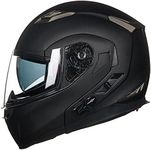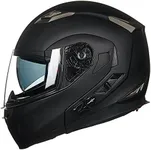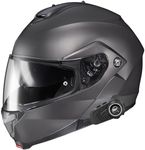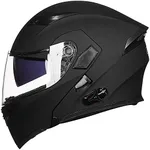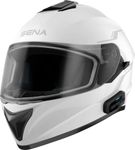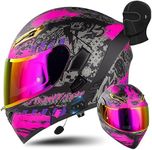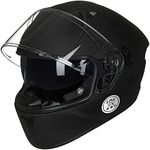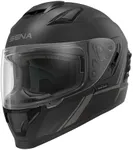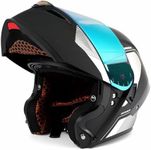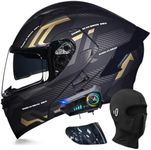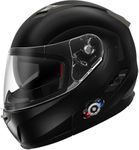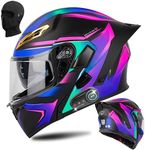Buying Guide for the Best Built In Bluetooth Motorcycle Helmets
Choosing the right built-in Bluetooth motorcycle helmet is crucial for ensuring safety, comfort, and connectivity while riding. A good helmet not only protects your head but also allows you to stay connected with others, listen to music, or get navigation instructions without distractions. To make an informed decision, you need to consider several key specifications that will help you find the best fit for your needs.Safety CertificationsSafety certifications indicate that the helmet meets specific safety standards. This is important because it ensures the helmet can provide adequate protection in the event of an accident. Common certifications include DOT, ECE, and Snell. DOT is a basic standard in the US, ECE is recognized in Europe, and Snell is a more rigorous standard. Choose a helmet with at least one of these certifications to ensure it meets safety requirements.
Fit and ComfortFit and comfort are crucial for long rides. A helmet that fits well will stay securely on your head and provide better protection. Helmets come in various sizes and shapes, so it's important to try them on or measure your head circumference to find the right size. Look for features like adjustable padding, ventilation systems, and lightweight materials to enhance comfort.
Bluetooth TechnologyBluetooth technology allows you to connect your helmet to your smartphone or other devices for communication, music, and navigation. This is important for staying connected without taking your hands off the handlebars. Look for helmets with Bluetooth 4.0 or higher for better connectivity and battery life. Consider the range, battery life, and ease of use of the Bluetooth system to ensure it meets your needs.
Battery LifeBattery life determines how long you can use the Bluetooth features before needing to recharge. This is important for long rides where you need continuous connectivity. Helmets with longer battery life (8-20 hours) are ideal for extended trips. Consider your typical ride duration and choose a helmet with a battery life that matches or exceeds it.
Sound QualitySound quality affects how well you can hear music, calls, and navigation instructions. This is important for clear communication and an enjoyable riding experience. Look for helmets with high-quality speakers and noise-canceling microphones. If you ride in noisy environments, prioritize helmets with good noise isolation to ensure you can hear clearly.
Ease of UseEase of use refers to how simple it is to operate the Bluetooth features while riding. This is important for minimizing distractions and maintaining focus on the road. Look for helmets with intuitive controls, such as large buttons or voice commands, that can be easily operated with gloves on. Consider how user-friendly the helmet's interface is to ensure you can use it safely and efficiently.
Helmet TypeHelmet type refers to the design and coverage of the helmet. This is important for both protection and comfort. Common types include full-face, modular, and half-helmets. Full-face helmets offer the most protection and are ideal for high-speed riding. Modular helmets provide flexibility with a flip-up chin bar, while half-helmets offer more ventilation but less protection. Choose a helmet type based on your riding style and preference for protection versus comfort.
